Let’s have a closer look at the violin legato bowing technique!
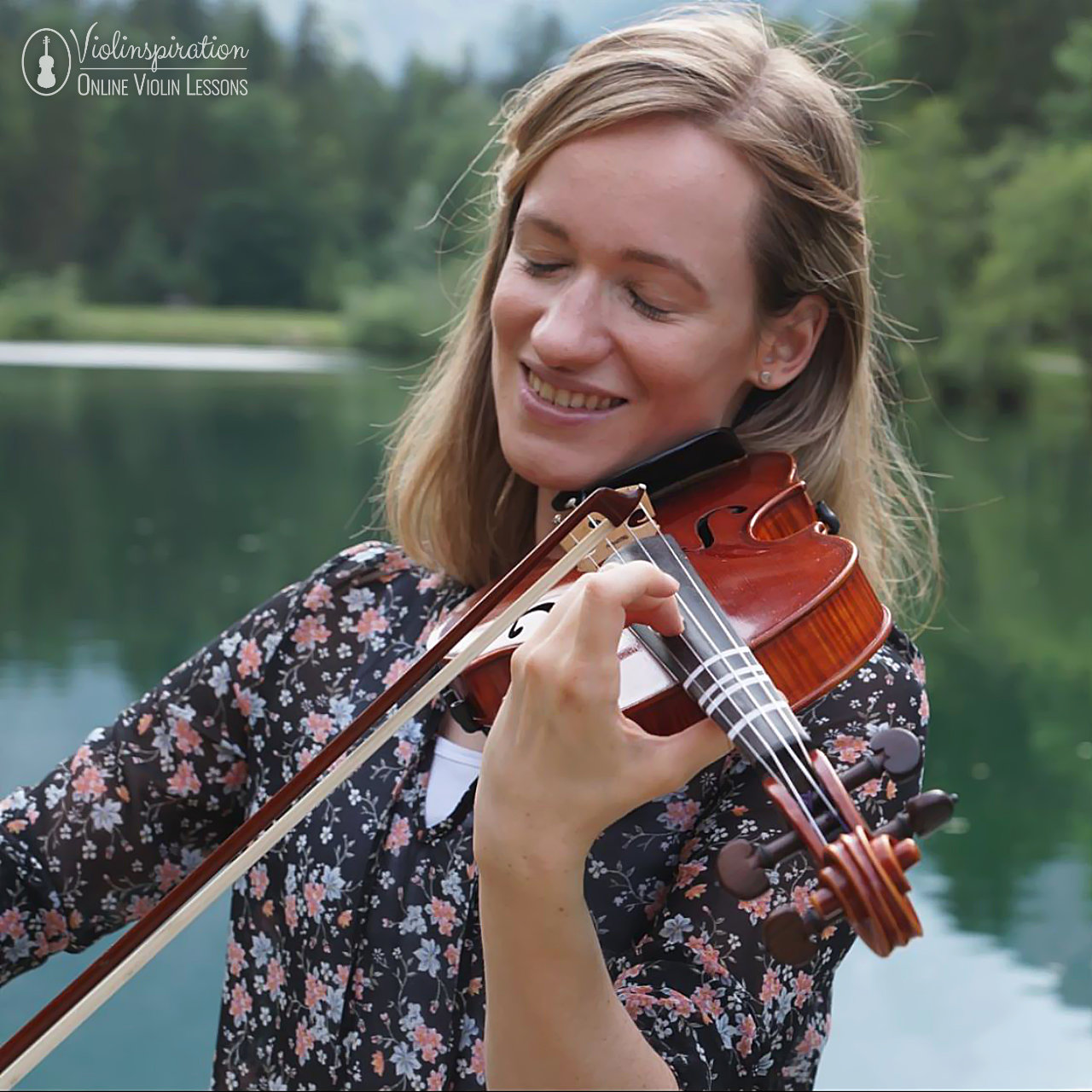
What is Legato?
Legato is an Italian musical indication from composers requesting a smooth, continuous sound between notes. In other words, you’re playing the full length of the notes with no interruptions in between them. For violinists, this means connecting multiple notes together as best you can with the bow.
You can think of legato as the opposite of staccato since the notes are instead leading to each other.
How to Play Legato on the Violin
In this video, I explain to you the violin legato.
One way I like to explain playing legato to my students is to tell them to imagine being on a swing. At the highest point of the swing, your body feels weightless for a moment before you start coming down. Naturally, gravity will bring your body back. Similarly, when you are changing bow directions, you want to prepare your right hand to go in the opposite direction. If you stop the momentum of your bow speed, you will naturally accent the next bow and it will sound staccato.
When playing legato, always remember to adjust the following aspects of your bowing:
Bow strokes
On the violin, you can play multiple notes in one bow stroke or connect two bow strokes as evenly as possible to achieve a legato sound. Whether you are playing up bow or down bow, you want the notes to sound like they are blending into each other for a long phrase.
Bow speed
The best way to accomplish a great legato is to use an even bow speed so that no note sticks out or has an accent. Think of the bow continuously moving, regardless of what notes are in the left hand.
Bow distribution
In terms of bow distribution, you want to try to divide the bow equally for each note. If e.g. one note gets half of the bow in a four-note phrase, the first note will sound more emphasized.
Change bow direction smoothly
And finally, when you change bow directions, allow some flexibility in your fingers and wrist to accommodate the change in motion. Your hand should never stop the motion.
How Legato is Annotated in the Violin Sheet Music?
The legato marking is an arch, found either above or below several notes connecting them. The arch, or sometimes even slurs, tells the violinist to connect the notes to each other for a long phrase. The phrases can be long, covering many bars, or just a few notes.
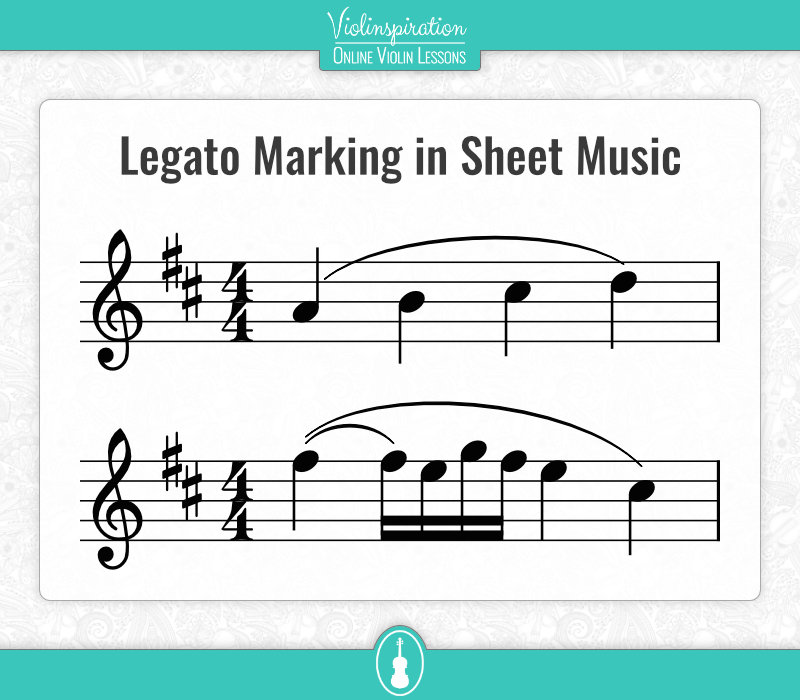
Examples of Legato in a Violin Repertoire
There are many examples of legato playing in the violin repertoire. Almost every second movement of violin concertos includes legato playing because the composer wants singing, lyrical phrases.
Violin Concerto in D Major by P. I. Tchaikovsky
An example is Tchaikovsky’s Violin Concerto in D Major, 2nd Movement. The opening phrase by the violin is to be played as connected and smoothly as possible. In this way, the phrase sounds like it’s being sung with lots of emotion.
Here, Julia Fischer accomplishes the legato articulation by connecting each bow stroke. When her first up bow gets to the frog, her wrist is flexible and anticipates the down bow direction. Her arm smoothly changes direction. Then, when she plays multiple notes in a bow, she evenly divides her bow and keeps the bow speed the same so as not to accidentally let one note stick out.
Meditation from Thais
Another great example is Meditation from Thais. This beautiful melody uses connected bow strokes to ensure the tune is singing. The left-hand vibrato helps to make the melody sing, but the long phrase is accomplished mainly by the right hand’s smooth bow changes.
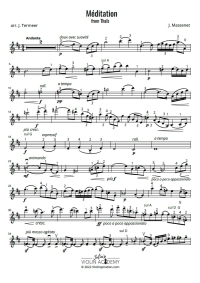
Meditation from Thais by J. Massenet
Free Violin Sheet Music
How Do You Practice Legato on the Violin?
Here are a few tips for learning legato that you can incorporate into your daily practice.
1. Relax your hand
In order to get the legato sound, relax your hand and let your fingers move along with the bow. You can even practice how to relax your hand and move the bow without the actual bow, just phantom bowing over your shoulder to get used to the motion.
2. Practice smooth bow changes over and over again
Some good exercises are simply playing one note per bow over and over. You want your up bows and your down bows to sound the same so use a slow, even bow speed and try to anticipate the bow changes.
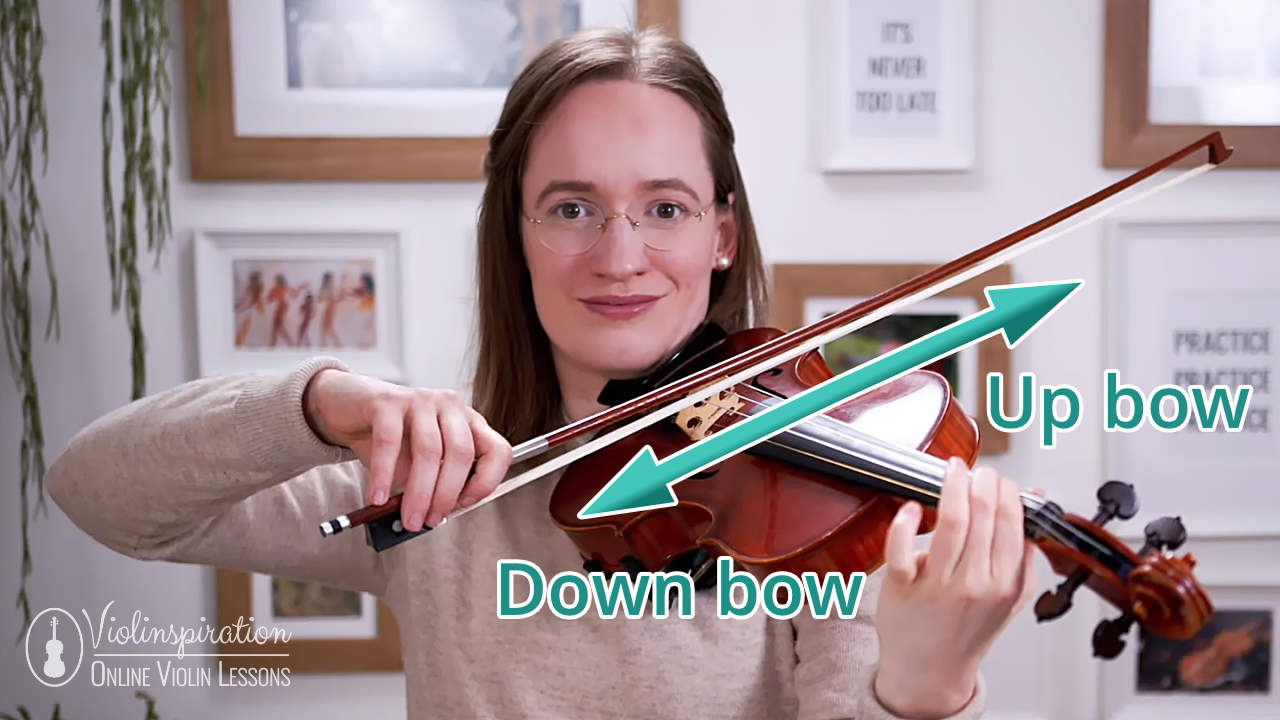
Always keep your hand in motion a little bit in order to catch the direction change without a hiccup. Try not to lift the bow off the string when you’re about to change directions. Let your wrist guide the connection. You can warm up with a scale this way.
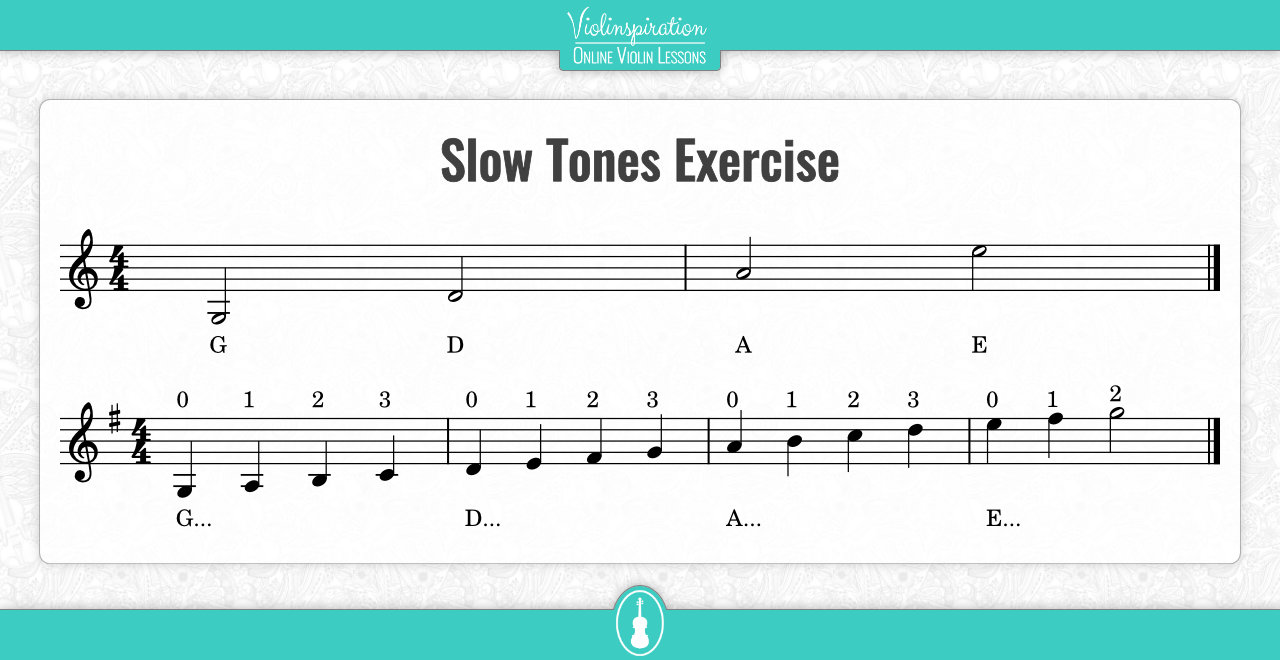
3. Divide your bow
Another good strategy I like is to physically divide the bow. You can put a sticker, tape, or even small hair clips on your bow so that you can visually see how it’s divided.
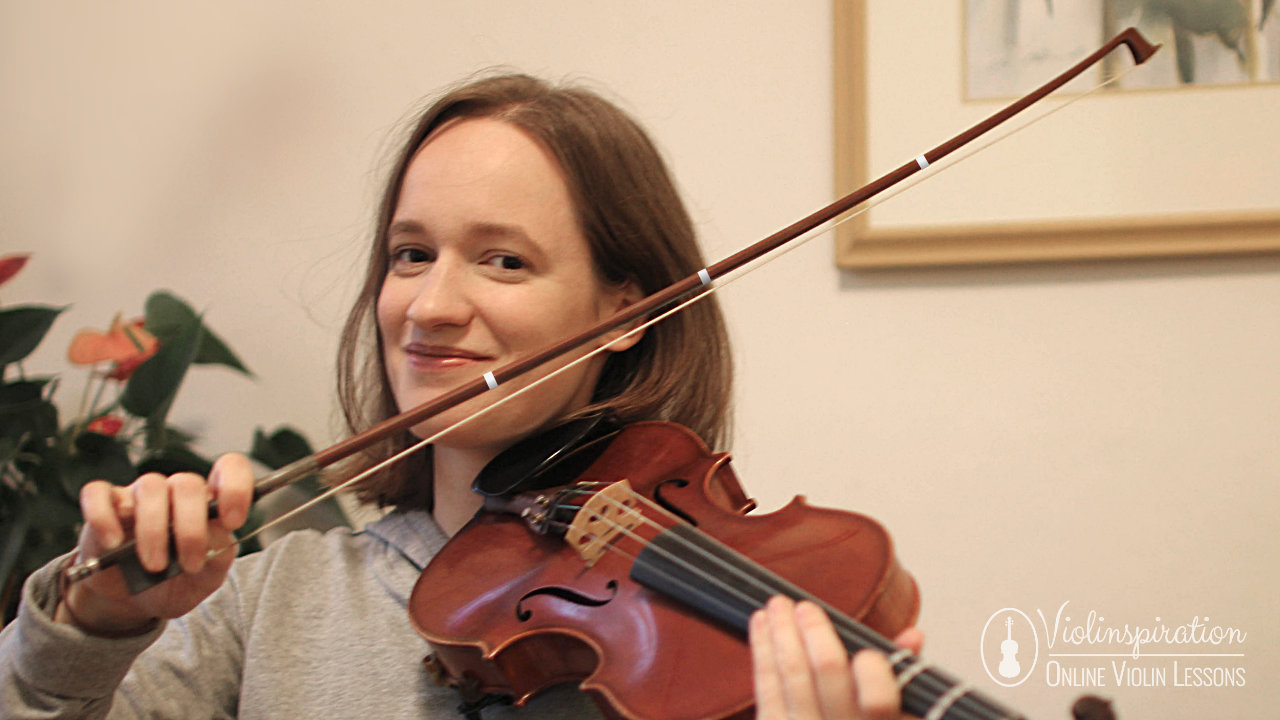
4. Try some etudes!
Schradieck’s School of Violin Techniques book 1, etude 1 offers a great opportunity to practice legato bowing.
If you just play the etude with one beat per bow (four notes per bow), you want to make sure that your bow isn’t stopping between the notes and that you are dividing your bow into 4 equal parts. A metronome will help you with that.
Then you can start playing eight notes per bow, 16 notes per bow, and eventually, you can try playing the entire bar on one bow stroke!
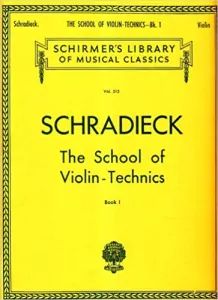
School of Violin Techniques
by Henry Schradieck
How Do I Make My Violin Sound Smoother?
Some tips to make your violin sound smoother are:
1. Relax!
The more tension you hold in your hand, the more you are working against yourself. Whether you are playing one note per bow or 10 notes in a bow with string crossings involved, you need to relax your hand.
Think for example of how a singer sings Ave Maria with each note blending to the next. If they stopped the sound after every note, it would sound super choppy. Btw, you can download here my free violin sheet music for Ave Maria by Schubert and practice this beautiful tune with long, connected bow strokes.
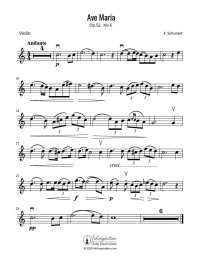
Ave Maria by Franz Schubert
Free Violin Sheet Music
2. Practice separate bow strokes first
If you can get a legato stroke for separate bow strokes, you can easily work the fingerings in later. Start on an open A and just get the note to ring continuously while you change bow directions.
3. Practice string crossings with open strings
If a passage like in Musette is difficult, practice it on an open string first. Divide the bow into four parts and develop an understanding of how the bow will move without the left hand complicating things. Once it goes well, add the fingering.
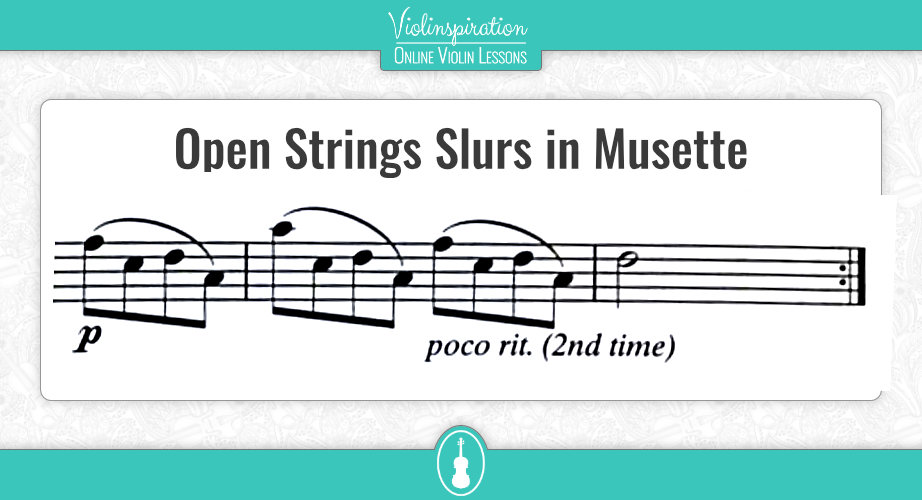
Final Note
Legato technique does take time to master, so feel free to come back here from time to time, and double-check if you’re incorporating all my tips when practicing. Also, listen to recordings and pay attention to how the professional players do the bow changes and how it sounds.
Last, but not least, if you’d like to get feedback on your attempt to play legato, feel free to upload your feedback video here (Julia’s Violin Academy members only) or check my video about playing legato in the Academy.
























